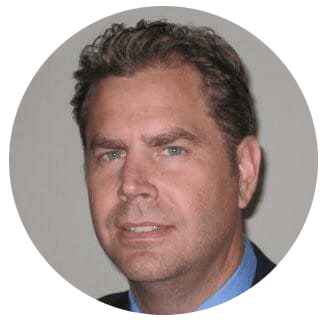Interview: The Impact of Highly Dynamic Environments on The MLR Process - May 2020
With Mark Bard and Mark Gaydos


Changes in the MLR Review Process
A 6 minute watch. This video is a summary of a conversation between the DHC’s Founder Mark Bard and Sanofi’s VP of North American General Medicine Advertising and Promo, Mark Gaydos. Mr. Gaydos, a respected member of the DHC’s Advisory Board. The discussion focused on the role of MLR review during highly dynamic periods – such as the COVID-19 pandemic. A transcript of the video is also available below.
Video Transcript
Mark Bard: Welcome, my name is Mark Bard with The DHC Group, one of the Co-Founders. Today we’re going to be doing a conversation with Mark Gaydos with Sanofi and currently the VP of North American General Medicine Advertising and Promo. Just to comment up front that the comments made by Mark today are his own, his personal opinion and not those of Sanofi. One thing we’ve tried to do in this highly dynamic environment is talk to some of the smartest people in the industry about what they’re seeing, how they interpret some of those changes, and what they see happening going forward.
Certainly, one of the big questions that we’ve been hearing over the past three or four weeks is this idea of how does MLR, how does the review process come into play in these highly dynamic times when materials are being forced to change, or people may put a pause on a campaign and say we need to rethink the way we do this, or in a lot of cases, we need to very quickly digitize a lot of content we were using in person to make it accessible through some of these digital tools.
With that, I’m going to turn it over to Mark. We’re going to start with this idea of trying to better understand what has happened over the past 30 days if you will where there’s certainly been a lot of changes. We’re in this work from home environment for many people. How has the process of MLR Review changed from your opinion over the past month?
Certainly, one of the big questions that we’ve been hearing over the past three or four weeks is this idea of how does MLR, how does the review process come into play in these highly dynamic times when materials are being forced to change, or people may put a pause on a campaign and say we need to rethink the way we do this, or in a lot of cases, we need to very quickly digitize a lot of content we were using in person to make it accessible through some of these digital tools.
With that, I’m going to turn it over to Mark. We’re going to start with this idea of trying to better understand what has happened over the past 30 days if you will where there’s certainly been a lot of changes. We’re in this work from home environment for many people. How has the process of MLR Review changed from your opinion over the past month?
Mark Gaydos: Hi, Mark, thanks for the question. I’m not sure if the process has had to change. I think the process has remained intact. I think it’s how the process is executed. I think we’ve tried to replicate the team interaction as much as possible, so something like Zoom that allows people to not only have real-time conversations but to turn the camera on and actually see folks in the room. You’re still replicating as much as possible that team interaction.
Working from home isn’t a brand new concept that has come into being with the pandemic. It has come into being more so because so many more people have to work from home now. People are committed. People are working harder than ever, maybe harder than ever before, with the pandemic working remotely. People are very engaged. They are online. They’re not phoning it in; they’re not just emailing comments; they are really committed to the team collaboration when it comes to MLR and making sure that it’s maintained during this time.
Working from home isn’t a brand new concept that has come into being with the pandemic. It has come into being more so because so many more people have to work from home now. People are committed. People are working harder than ever, maybe harder than ever before, with the pandemic working remotely. People are very engaged. They are online. They’re not phoning it in; they’re not just emailing comments; they are really committed to the team collaboration when it comes to MLR and making sure that it’s maintained during this time.
Mark Bard: Have you seen any changes with some of the physician content or some of the messaging that’s been going out there in this time?
Mark Gaydos: I think industry in general has been moving towards digital so that we’re not in a situation as an industry of having to convert everything from hard copy and paper to digital. Hopefully, whether it’s been digital visual aids, or websites, or other social channels, companies have been moving in that direction industry; maybe not as quickly as other industries, but certainly, we’re all there. I think that there wasn’t a huge adjustment with that respect.
I think most companies that would be convening the right functions internally say how do we take what was normally a face to face interaction whether it was one to one detailing, speaker meeting, webinars, things like that? How can those be converted to an appropriate remote type of interaction or virtual interaction but still achieving compliance with all the requirements because the requirements don’t change because of COVID-19? The regulatory requirements, legal requirements, or what have you, remain the same. I think we can all find ways to make sure that we maintain that compliance.
I think most companies that would be convening the right functions internally say how do we take what was normally a face to face interaction whether it was one to one detailing, speaker meeting, webinars, things like that? How can those be converted to an appropriate remote type of interaction or virtual interaction but still achieving compliance with all the requirements because the requirements don’t change because of COVID-19? The regulatory requirements, legal requirements, or what have you, remain the same. I think we can all find ways to make sure that we maintain that compliance.
Mark Bard: In a world that speaker bureaus are not happening, that in-person events may not be happening, and conferences at least for the next three to six months may not be happening, any comments on that of how do you think about as a company, or as marketing, or as brand teams think about when those events go by the wayside, whether going virtual or disappear, how do you start to fill that gap in terms of that education and making sure you’re getting the right messaging out there?
Mark Gaydos: I guess there’s two different buckets of communication. There’s promotion which have medical conventions as you mentioned, your own family have your exhibit, exhibit halls where you have promotional booths, etc. Some of that might not happen clearly when you have an event cancelled. To your point, some medical associations have outright canceled their events, some are doing some virtual version or attempting to do a virtual version of these, some are just simply making scientific content available on their website for members to access. I think that’s something that each company needs to come together and internally with the appropriate functions figure out how best to engage with those medical associates to make sure that scientific information is still available.
I think as much as possible, how do you approximate what an actual live conference would have looked like? I think it’s helpful if you can collaborate with the actual medical association. In some cases, they are trying to do virtual conferences. That’s probably the best approach.
I think as much as possible, how do you approximate what an actual live conference would have looked like? I think it’s helpful if you can collaborate with the actual medical association. In some cases, they are trying to do virtual conferences. That’s probably the best approach.
Mark Bard: Mark, that was great. Thank you so much. Any other advice to the industry or colleagues as a whole to say this is how you have to be nimble in these times?
Mark Gaydos: Yeah, I think so far, I’ve seen teams rise to the occasion. They are collaborative; they’re engaged; they’re meeting in person even though it’s videos on a screen and not actually in the same room. I think it’s also good aside from that for there to be interactions of that nature that are separate from the work so that – more like team building type of events. I think that keeps people’s spirits up, keep morale up, keep that sense of teamwork. It’s not just about getting together to churn through, copy, and get things approved, but there’s a broader look because I think that you’re impacted on a phycological level as well and an emotional level about all of this. I think that’s important, especially if this is something that doesn’t resolve and we don’t return to what – the new normal in the immediate term.
The DHC thanks Mark Gaydos for sharing his perspective with our members.
The DHC thanks Mark Gaydos for sharing his perspective with our members.
Connect with Mark Gaydos on LinkedIN
Connect with Mark Bard on LinkedIN
Connect with Mark Bard on LinkedIN
